Hardy Fuchsias
What's a hardy fuchsia
The term hardy fuchsia is universally accepted as a term that defines fuchsias that will survive as a perennial when planted in the ground. In other words fuchsia hardiness is an expectation that a fuchsia planted in the ground has a reasonable expectation of survival from one year to the next. In my definition hardiness doesn't just mean survival, but to thrive from one year to the next. Hardiness varies between different fuchsia varieties.
Not all 'hardy' fuchsias will grow in all locations. There are a great many fuchsia varieties considered hardy in a climate where the winter temperature doesn't drop below 30° F. When you look at areas where the climate gets cooler, the list of potential hardy varieties starts to dwindle. The list starts to thin rapidly for garden areas where the winter low temperature regularly drops down below 15° F.
When planted in areas of winter freezing, fuchsias are herbaceous perennials. Regular frosts will defoliate the plant. Regular hard freezing will freeze the plant to the ground. A hardy fuchsia will regenerate and grow new branches in the Spring that sprout from the underground structure of the plant.
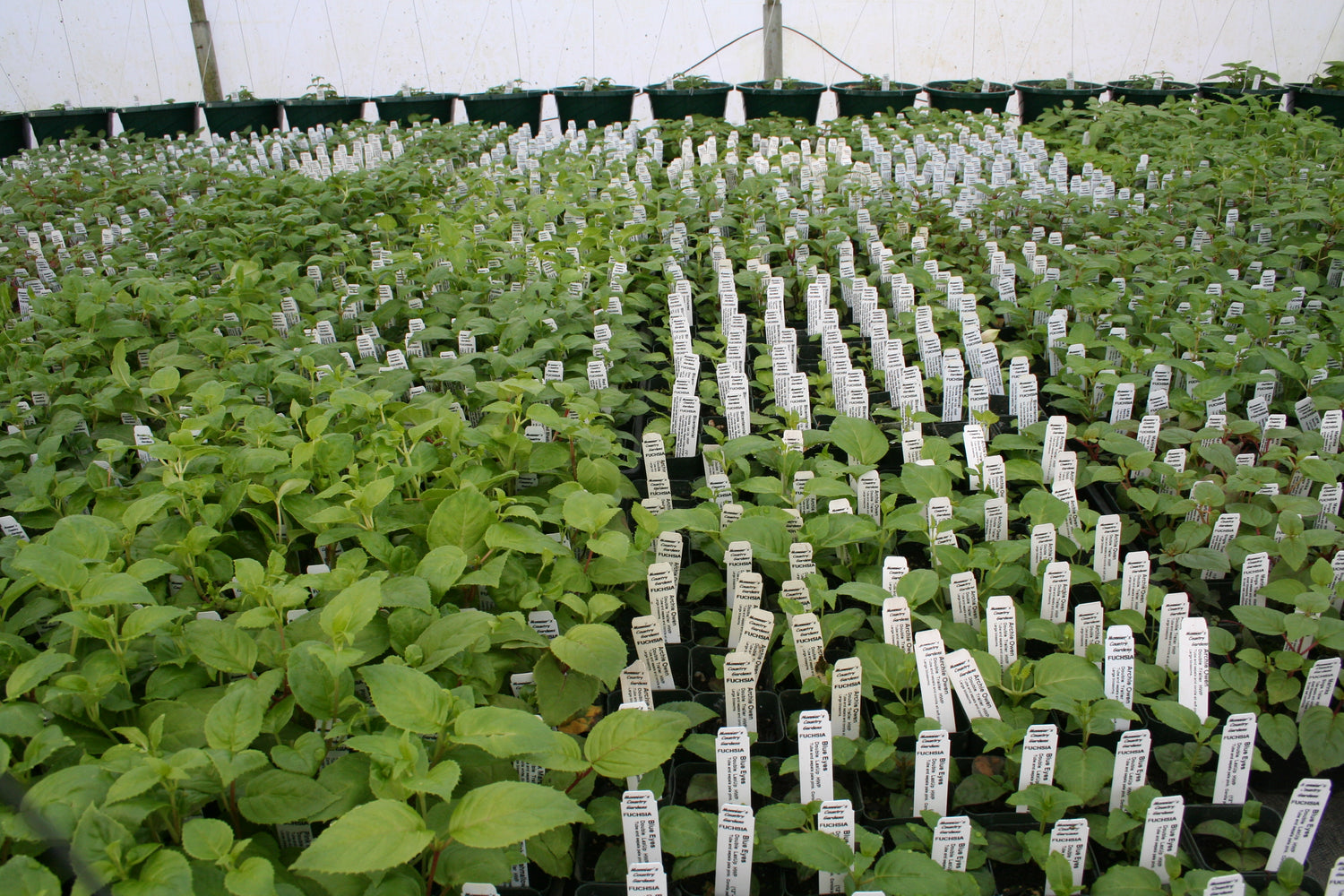
Choosing a variety
Determining which fuchsia varieties are hardy in your area can sometimes require a little sleuthing.
Obviously the first place to look would be on the plants tag. Many growers will tout hardiness on a plant label. That can be unreliable if the grower has done his hardiness testing in a climate that doesn't get as cold as your site.
It's good to check with your local garden center. A representative can sometimes inform you with which varieties are successful in your area.
An excellent option is to check in with a local fuchsia society or garden club. Gardeners love to share information about what they have had success with in their gardens.
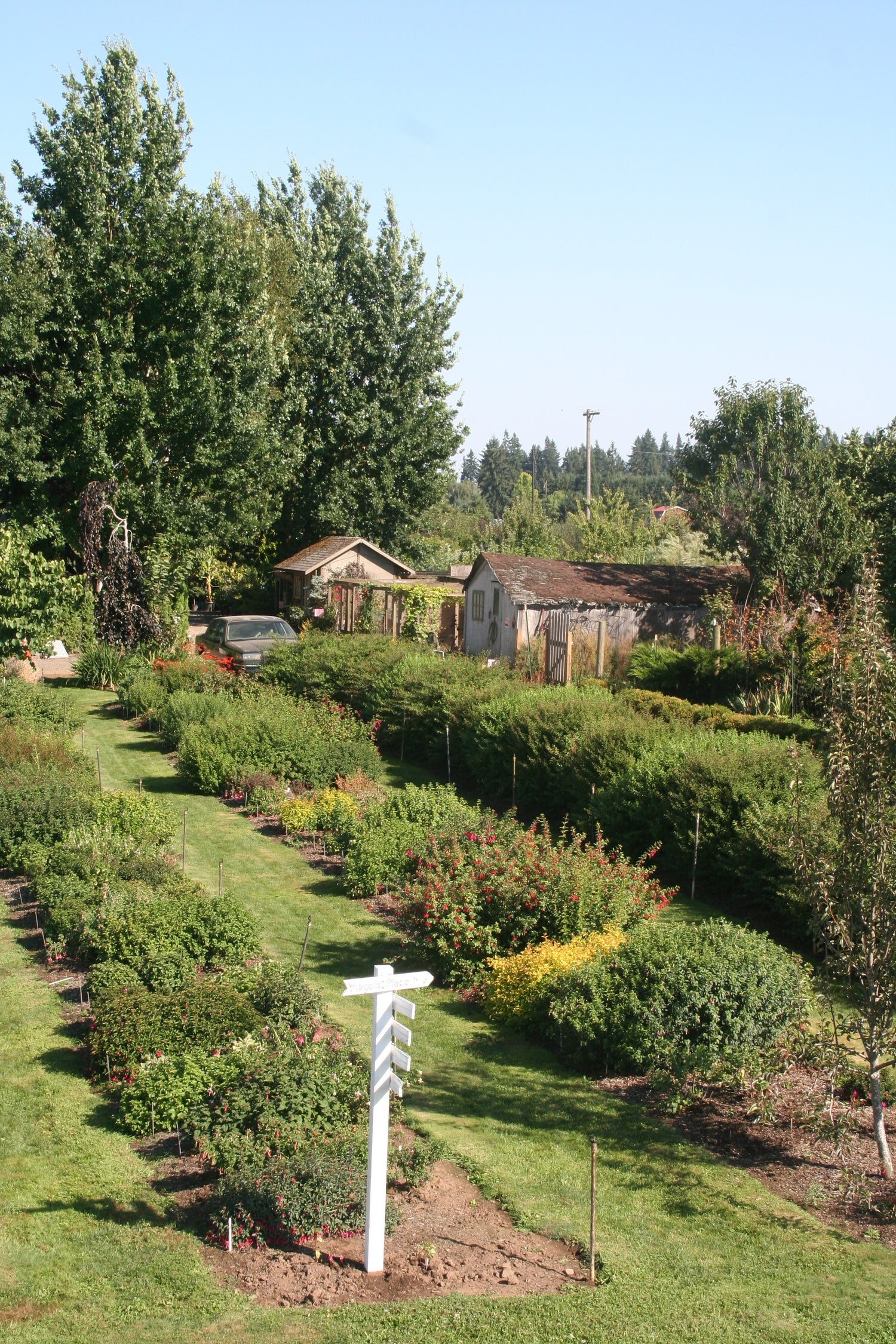
I love to get out and tour local public gardens. It's especially helpful when the plants have been tagged with their names. You can learn a lot about the size and growth habit of different varieties through visual inspection.
There have been a boatload of books written on the subject of hardy fuchsias. Similarly there are web sites that will provide lists of hardy fuchsias.
Sometimes it just comes down to biting the bullet and planting a variety in your garden to test it yourself. Debbie always says, 'plants can't read...they don't know whether they are supposed to be hardy or not.'

What's the best spot for planting
Fuchsias are often thought of as a shade loving plant. That comes from experiences of fuchsias growing in containers. Container fuchsias must be protected from the sun beating on the pots, heating the roots. Planted in the ground fuchsias will not perform well in dense shade. Experience has shown that a fuchsia will be bushier, more compact, and bloom better with more sun than shade. In areas where the summer temperature regularly exceeds 85-90 degrees F., the plant will benefit with some dappled afternoon shade. Avoid planting next to a structure where the soil would heat up from reflected afternoon sun.

Another important consideration with picking a location to plant a fuchsia in the landscape is that it will require a well drained spot free from puddling water. Fuchsias do not like 'wet feet' for prolonged periods of time. My experience has shown that more fuchsias die in a wet winter than a cold one. In wet areas planting fuchsias in a raised part of the garden is much better than a low spot that doesn't drain.

When do I plant
My favorite time to plant is in the Spring, after the threat of frost is past. I prefer to have evening temperatures above 45° F when plant out the first plants for the year.
I recommend avoiding planting in the summer when the daytime temperature is regularly 85° F or more. Avoid planting when the daytime temperatures will be hot (over 85° F), or just before a heat wave. The plants will stress. The stressed plants will have a difficult time recovering.

Fall planting works well too. When the summer high temperatures have settled back to the mid-80's and less, this would be considered a good time to plant again. The important thing to consider is to make sure you have at least 8 weeks between planting and your typical first frost date. Eight weeks is what my experience shows to be a minimum amount of time to establish a plant before freezing weather sets in.
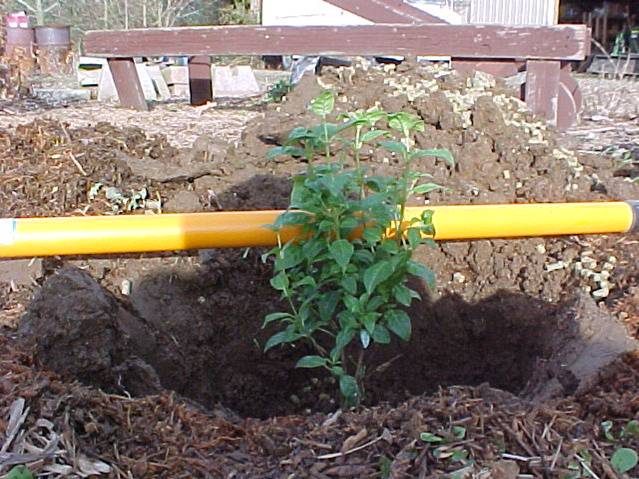
Plant deep
Fuchsias are plants on the short list of plants that will benefit from planting deep. They like to be sunk down in the ground. In a USDA hardiness zone 8 or 9 garden the recommended amount is to have the soil level of the pot to be 4" to 6" deeper than the garden soil level. This is extremely important to the success of your fuchsia's cold hardiness. The underground stems and root system are full of sugars and starches. They act as a protected energy reserve. In years where the fuchsia is frosted to the ground level, new shoots will emerge from those protected stems. For those in colder zones, planting 6"-8" is not a bad idea.
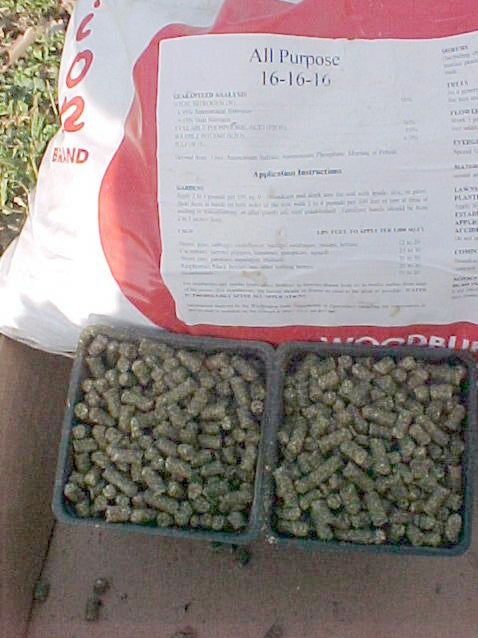
Amend the soil
With the planting hole dug to the appropriate depth you will want to amend the soil with organic matter and fertilizer. The organic matter can be anything that would be safe to use on plants. Well rotted compost, potting soil, alfalfa pellets, peat moss, and rotted bark mulch are all good amendments as are other sources of organic matter.
There are many all purpose garden fertilizers in the marketplace. I recommend any type of all purpose dry granular fertilizer, synthetic or organic. Follow the manufactures directions for use.

Work about half the organic matter and half the fertilizer into the bottom of your planting hole. Mix the other half with the back fill soil.
The ingredients I use are potting soil and 16-16-16 granular fertilizer. I always have a good supply of used potting soil on hand. For each plant, I thoroughly mix a couple cups of it in the bottom of the hole along with about 1/8 cup of 16-16-16 granular fertilizer. I thoroughly mix another 2 cups of potting soil and 1/8 cup of 16-16-16 fertilizer to the backfill.
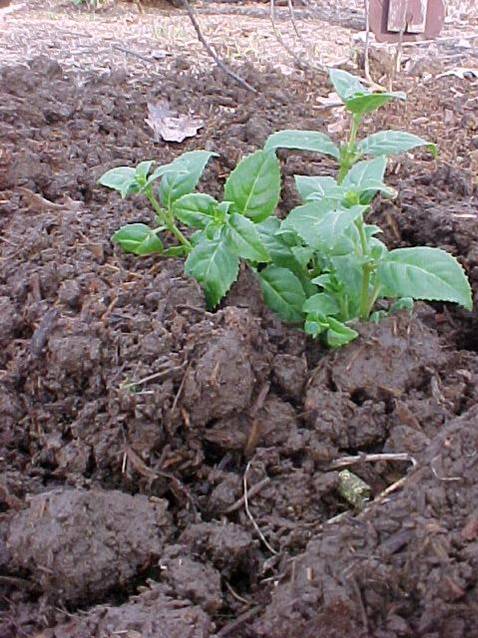
Filling the hole
It often looks daunting with how deep the fuchsia is when you put it down in the hole. When pulling the backfill into the hole, your plant may not be tall enough to backfill all the way without your planting becoming a burial. If that's the case, pull only enough backfill in the hole so that there is still at least 4"-6" of exposed stems. As you plant grows through the summer, periodically pull more soil to the hole until it eventually is full planted.

Mulching
There are a number of benefits to mulching your fuchsias. Three or four inches of shredded leaves, composted yard debris, or bark mulch spread evenly around fuchsias are commonly used. Bark mulch is an attractive form. Shredded leaves and composted yard debris may not be attractive but are good for the soil. Avoid using un-composted grass clippings, straw, or other heavy and compacting materials.
Mulches help hold water in the soil through the summer and to help keep the soil a bit cooler through hot spells. Mulches break down over time and provide a valuable source of organic matter back to the soil and improve soil tilth.
Mulch is an excellent insulator for protecting the crown of the fuchsias through freezing weather. A couple more inches of mulch are beneficial being pulled over the fuchsias crown through the Winter. It's important to pull the mulch back off the crown of the plant in late Winter or Early Spring before the plants starts re-growing. Opening the crown will help it to warm in the Spring to get the plant off to an early start.

Watering
Thoroughly water your fuchsia at planting time. Do not let it totally dry out thereafter. My preference for regular watering is through drip irrigation. Most home gardens are set up with overhead watering and can certainly be used on fuchsias. With drip, the watering can be applied anytime of day. Avoid overhead watering in the heat of the day. The fuchsia blossom run the risk of spotting when water droplets heat up on the flower.

Regular Fertilization
Fuchsias are heavy feeding plants. To grow a large fuchsia with an abundance of bloom, regular fertilization is required. Similar to fertilizer used at planting time, you can use any all purpose type of garden fertilizer. Dry granular fertilizer, synthetic or organic. Follow the manufactures directions for use.
I use granular 16-16-16 as a form of regular fertilization. I spoon feed it three times through the growing season. My timing is to apply as the plant starts to grow in mid-March to early April. Subsequent applications are made around the first of June and a final application around the first of August.
I use 1/4 cup per plant with each fertilization. The application is spread evenly around the base of the plant. Do not throw or pile the fertilizer in the middle of the plant.

Expectations
Like any other perennial plant, fuchsias take a few years to mature and grow onto their adult sizes.
Following the basics of light, water, and food will keep your fuchsia growing and expanding. You will also be rewarded with and abundance of bloom.

As Granite is showing, hardy landscape fuchsias grow and become more substantial with age. Most obtain their full stature in their third summer after planting.

Pruning
Through the growing season, it best to avoid pruning any of the plants growth. Removing growth in the summer, reduces the plants ability to bloom.
I like to trim the plant back in early winter after the plant has defoliated. I reduce the plant's size by about half to keep the plants from experiencing wind whip. I wait to do any further trimming until I've determined whether it has frozen to the ground or not.
To see if the plant has life above ground, look at the stems at about 4-6 inches above ground level. The stems are inspected by scratching the stem. If the stem shows a green color it is alive. If the stem has a brown water soaked appearance, it has frosted to the ground.

Fuchsias that have frosted to the ground can be cut back at any time in the Winter. I reduce them leaving about 12"-18" of 'dead' stems. I leave the old growth there so the location of the plant doesn't become lost through the Winter, and it can be easily be found in the Spring.
The new growth in the Spring is fairly tender coming out of the ground. The old sticks help give support to the new growth in the wind. The old sticks give protection to the plants from pets that will avoid walking on your plant too.
As long as there is green in the stem, the stem is providing energy to your plant. If it remains green until Spring, it may regrow from last years growth. Check the stems and see where the stems have frosted back to and direct your pruning there. If the green is below the 12"-18" level, stop pruning there for the reasons stated above. My experience has been that a plant that has been reduced by at least half will bloom better than one that was just lightly pruned.
